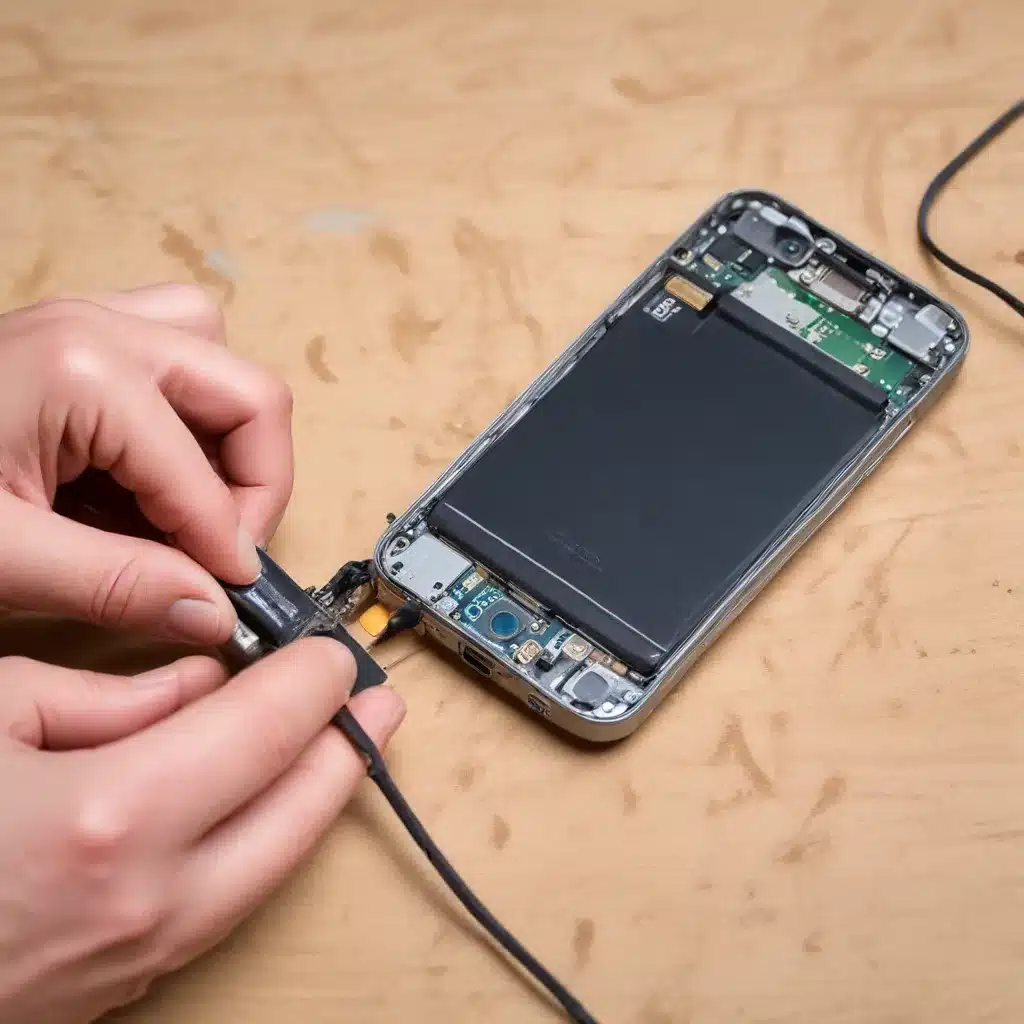
Understanding Smartphone Charging Port Issues
As a seasoned IT professional, I’ve encountered numerous cases of smartphone users struggling with charging port problems. Whether it’s an iPhone, Android device, or any other smartphone model, a malfunctioning charging port can be a frustrating and potentially costly issue. Fortunately, there are several strategies you can employ to troubleshoot and even repair a damaged charging port yourself, as well as professional service options to consider.
Common Causes of Charging Port Damage
Smartphones are subject to a variety of everyday wear and tear, and the charging port is one of the most vulnerable components. Some of the leading causes of charging port issues include:
- Accumulated Debris: Over time, lint, dust, and other small particles can accumulate inside the charging port, preventing a secure connection with the charging cable.
- Physical Damage: Dropping the device, plugging in the charging cable at an awkward angle, or using incompatible cables can physically damage the delicate pins and connectors inside the port.
- Corrosion: Exposure to moisture, liquids, or extreme environments can lead to corrosion of the charging port’s internal components, hindering the ability to charge the device.
- Software/Hardware Glitches: In some cases, software bugs or hardware malfunctions can interfere with the proper functioning of the charging port, even if the port itself is physically intact.
Identifying Charging Port Problems
Symptoms of a damaged or malfunctioning charging port can vary, but some common signs include:
- Inconsistent or Unreliable Charging: The device may only charge when the cable is positioned in a specific way or at a particular angle.
- Slow or No Charging: The device may charge very slowly or not charge at all, even with a known-good cable and power source.
- Frequent Disconnections: The charging cable may repeatedly disconnect from the port, preventing a stable connection.
- Overheating During Charging: The device or the charging cable may become excessively hot while attempting to charge.
DIY Charging Port Repair Strategies
Before seeking professional repair services, there are several DIY techniques you can try to address charging port issues. However, it’s crucial to exercise caution and avoid causing further damage to your device.
Cleaning the Charging Port
One of the most common causes of charging port problems is the accumulation of debris, such as lint or dust. Carefully cleaning the port can often resolve the issue without the need for more advanced repairs.
Recommended Cleaning Procedure:
1. Power off your device and unplug any cables.
2. Gently blow compressed air into the charging port to dislodge any visible debris.
3. Use a soft, non-metallic tool, such as a wooden toothpick or a plastic dental pick, to carefully remove any remaining particles from the port. Avoid using sharp or metal objects, as they can damage the delicate components.
4. Reinsert the charging cable and test the port’s functionality.
Remember to be gentle and avoid applying excessive force, as this could potentially worsen the problem or cause permanent damage to the port.
Seeking Professional Repair Services
If the DIY cleaning approach does not resolve the charging port issue, or if you’re uncomfortable attempting the procedure yourself, it’s best to seek professional repair services. Here are some options to consider:
Authorized Service Centers:
Many smartphone manufacturers, such as Apple, Samsung, and Google, operate authorized service centers or partner with third-party repair providers. These centers employ trained technicians and use genuine replacement parts, ensuring a high-quality repair process.
Independent Repair Shops:
Local electronics repair shops or smartphone-specific repair services may offer charging port replacement or repair services at a more affordable cost than authorized centers. However, it’s essential to research the shop’s reputation and ensure they use high-quality components.
Mail-in Repair Services:
Some companies provide mail-in repair services, where you can ship your device to their facility for diagnosis and repair. This can be a convenient option, especially if there’s no local authorized service center nearby.
When considering professional repair services, be sure to inquire about the warranty, turnaround time, and the overall cost of the repair. Additionally, always backup your device’s data before handing it over for service to avoid any potential data loss.
Preventive Measures and Maintenance
To prolong the life of your smartphone’s charging port and prevent future issues, it’s essential to follow some basic maintenance practices:
- Use Genuine or Recommended Cables: Opt for charging cables and adapters recommended or provided by the device’s manufacturer. Avoid using cheap, third-party alternatives that may not be compatible.
- Keep the Port Clean: Regularly inspect the charging port and gently clean it with a soft, non-metallic tool to remove any accumulated debris.
- Avoid Excessive Wear and Tear: Be gentle when inserting and removing the charging cable, and avoid bending or twisting the cable, as this can damage the port over time.
- Consider Wireless Charging: If your device supports wireless charging, this can be a convenient way to charge your smartphone without relying solely on the physical charging port.
By following these preventive measures and maintenance tips, you can help extend the lifespan of your smartphone’s charging port and minimize the need for costly repairs.
Conclusion
Dealing with a damaged or malfunctioning smartphone charging port can be a frustrating experience, but with the right knowledge and approach, you can often resolve the issue yourself or seek professional assistance. Remember to start with gentle cleaning techniques, and if those fail, don’t hesitate to explore authorized service centers or independent repair shops for a more comprehensive solution.
By taking proactive steps to maintain your device’s charging port and being aware of the common causes of damage, you can help ensure a longer, more reliable charging experience for your smartphone. For additional IT support or technology-related inquiries, please visit https://itfix.org.uk/ for more helpful resources.












